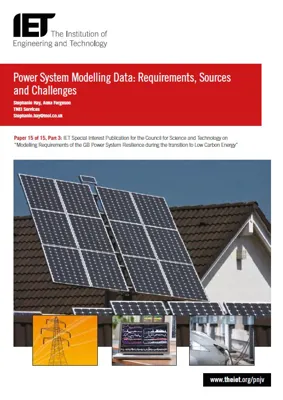Power System Modelling Data: Requirements, Sources and Challenges
Power system modelling forms a crucial part of the operation, management and planning of electricity networks. The value gained from power system modelling is in direct correlation with the quality and accuracy of the data and inputs used. As the industry shifts towards a low carbon future, there are a number of new data sources to account for, such as smart meters, Phasor Measurement Units (PMU) and High Voltage Direct Current (HVDC) technologies, as well as renewable generation and dynamic demand.
This paper presents ongoing work and development projects focused on, or with an element of, modelling these and other data sources such that accuracy can be improved as the uncertainty of a more variable and less deterministic power system grows as a result of increasing penetrations of intermittent generation and other challenges.
The current capability in the area of modelling data sources is described for both transmission and distribution, with each having a different portfolio of issues and objectives; the transmission network needs to model new HVDC and other transmission-specific technologies to manage the network within its statutory limits; while the distribution network must model a whole range of new low carbon technologies (LCT) with the objective of maximising capacity to connect generation.

